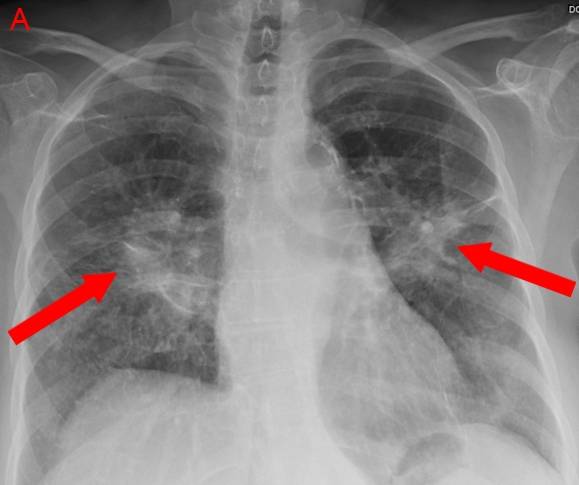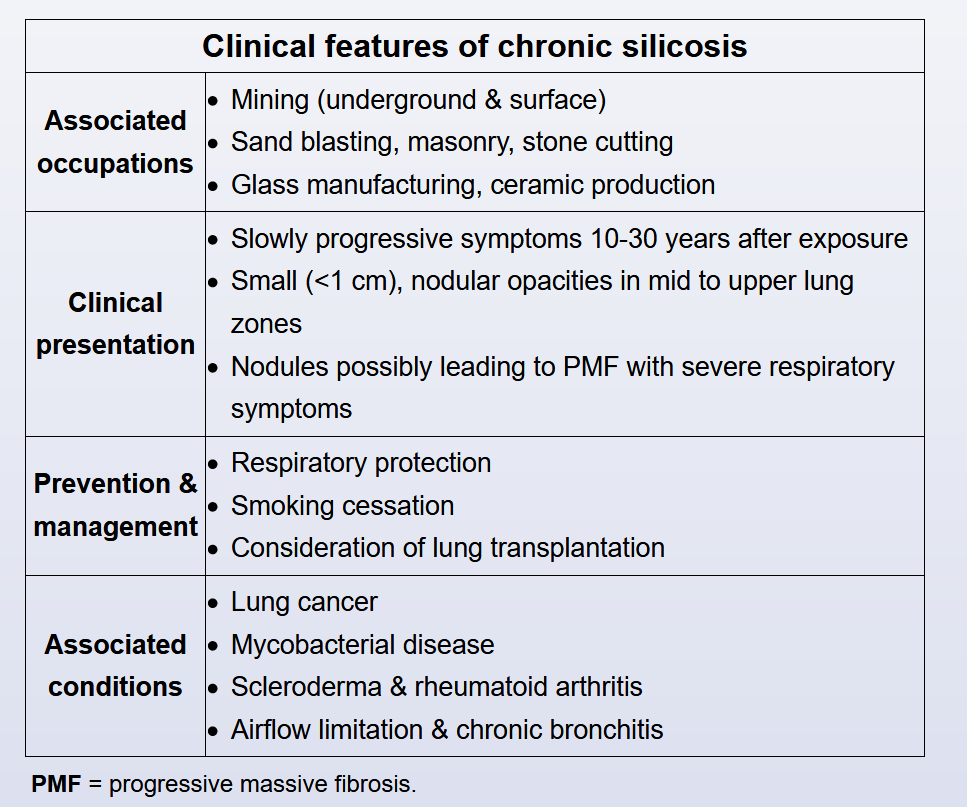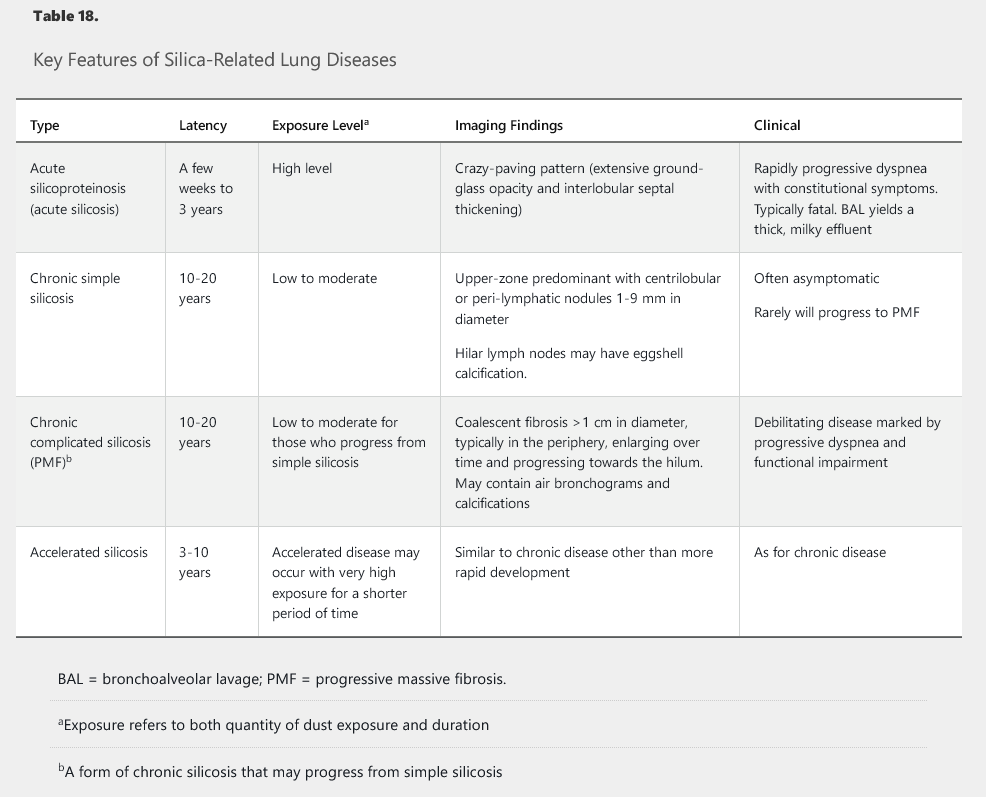Silicosis
- related: Pulmonology
- tags: #pulmonology
Overview
- pt: mining, hydraulic fracturing, sandblasting, and foundry work
- prevention: Respiratory protection (eg, particulate respirator) is the best strategy for preventing the disease
- pathology: macrophage reaction to silica by activating fibroblasts and cause collagen production
- sx:
- 10-30 years later after exposure
- asymptomatic
- dyspnea on exertion, productive cough
- dx:
- cxr: many small, round opacities that are distributed predominantly in the upper lobes
- In advanced disease, the nodules can enlarge and coalesce, resulting in retraction of the hila, upper lobe fibrosis, and hyperinflation in the lower lobes
- may sometimes show calcification of rim of hilar nodule (eggshell calcificaiton)
- cavitation can also present
- complications
- associated with TB due to impaired macrophage response
- bronchogenic carcinoma


MKSAP
Silicosis is a fibrotic lung disease caused by the inhalation of silica dust. Silica exposure typically occurs in industries that grind, cut, or drill silica-containing materials such as concrete, tile, and masonry. Pottery making, foundry work, and sand blasting can also result in exposure. Sandblasting of denim jeans (stone washing) recently resulted in an outbreak of disease in Turkey. Hydraulic fracturing for natural gas and oil may expose workers to hazards, as this process involves fine sand and a wide variety of chemicals.
There are four main types of silicosis (Table 18), and they are associated with altered cell immunity and macrophage function. Patients with silicosis are at increased risk for the development of mycobacterial infection and connective tissue disease. Chronic silicosis is associated with the development of infection, including tuberculosis, and clinicians should have a high index of suspicion for this complication. Once fibrosis develops in silicosis, there is little evidence that any therapies alter disease course. If individuals have continued exposure, removal from the environment will prevent further lung injury. Silica exposure is associated with increased risk of lung cancer, particularly for smokers. As a result, smoking cessation remains an essential intervention.
